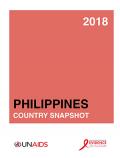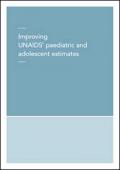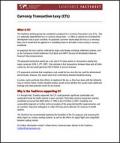What's New
Displaying results 1271 - 1280 of 4913

Resource | Publications,
The general objectives of the study are to determine the prevalence of sexually transmitted infections (STIs) like human immunodeficiency virus (HIV), Neisseria gonorrhoeae, Chlamydia trachomatis and syphilis among FSWs working in the highway areas of Nepal's Terai extending from the east to the far west; and to determine the prevalence of HIV and syphilis among the truckers operating on the eastern highway routes of Nepal.

Resource | Publications,
The purpose of this publication is to present a synthesis and new analysis of the available evidence on school violence and bullying, based on the latest and most comprehensive data. The aim is to raise awareness, share lessons learned and encourage countries to take evidence-based action to prevent and respond effectively to school violence and bullying.

Resource | Publications,
The Hong Kong STD/AIDS update is a composite report on HIV/AIDS reporting and STI caseload statistics published 3 monthly. The current issue has the updated information up to September 2018.

Resource | Publications,
Almost a decade ago, the international community agreed upon a Political Declaration and Plan of Action on International Cooperation towards an Integrated and Balanced Strategy to Counter the World Drug Problem. The Declaration included the decision to establish 2019 as the target date for the goals set within it, specifically for states to ‘eliminate or reduce significantly and measurably’ the illicit cultivation, production, trafficking and use of internationally controlled substances, the diversion of precursors and money laundering.

Resource | Guidelines,
Self-testing enables people to test themselves for HIV conveniently and in private. This new testing option may encourage more people to test themselves who previously held back from visiting a testing facility.
Community- and faith-based organizations engaged in HIV prevention and care are learning about HIV self-testing in order to decide how best to use this approach within their work. This brief answers some frequently asked questions.

Resource | Reviews and Snapshots,
The 2018 country snapshot prepared by UNAIDS Regional Support Team for Asia and the Pacific and AIDS Data Hub provides information on the HIV epidemic and response in the Philippines.

Resource | Publications,
This document provides paediatric HIV programme managers with an overview of how paediatric and adolescent estimates are produced, what the technical challenges and gaps in the data are, how those challenges are being addressed and what paediatric HIV programme managers and monitoring officers can do to improve their national estimates of the number of children and adolescents living with HIV.
Robust estimates of the number of children and adolescents living with HIV are critical to determining HIV treatment needs and gaps among children. Estimates of the number of new child HIV infections provide evidence of the impact of prevention of mother-to-child transmission of HIV services. These data are also used to help to plan, advocate, monitor, evaluate, strategize and allocate resources appropriately. However, producing strategic information about the HIV epidemic among children can be challenging.

Resource | Fact Sheets,
The Taskforce working group has considered a proposal for a Currency Transaction Levy (CTL). This is a nationally implemented levy on currency transactions – in effect a national tax earmarked for development uses in poor countries. As proposed, countries would adopt the levy on a voluntary basis, but it would then be applied on a mandatory basis to all trades in that country’s currency, worldwide.
As proposed, the levy could be collected by large-scale foreign-exchange settlement systems, such as the Continuous Linked Settlement (CLS) Bank and SWIFT (Society for Worldwide Interbank Financial Telecommunication).

Resource | Publications,
This publication documents the current scenario and future trajectory of the AIDS epidemic, with a special focus on the role of key populations and the recommendations of a brainstorming session in which participants engaged in “out-of-the-box” thinking aimed at ending the AIDS epidemic by 2030. Convened by WHO South-East Asia, along with key stakeholders, experts and community representatives, and held in New Delhi, India, the meeting examined the latest trends in Asia’s HIV epidemic and response, discussed ongoing and emerging challenges, and proposed a series of actions that would put all countries on track to end the HIV epidemic by 2030.
Resource | Publications,
This publication examines the human and financial stakes involved in the WHO South-East Asia’s quest to end AIDS as a public health threat. It explores where and how programmes are working, where our efforts are falling short, and key actions that are needed to ensure that we get on track to end the epidemic.





